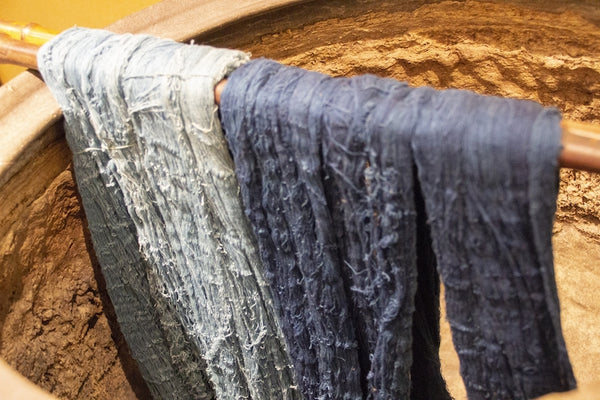china making indigo dye
The Art and Science of Indigo Dyeing in China
Indigo dyeing has a rich and vibrant history in China, where it has been practiced for thousands of years. This ancient technique has not only shaped the country's textile industry but also influenced its culture and trade. The deep blue hue of indigo has become synonymous with craftsmanship, artistry, and tradition in China's fabric production.
Historical Background
Indigo, a natural dye derived from the plants of the genus *Indigofera*, has been used for dyeing textiles since antiquity. Archaeological evidence suggests that indigo dyeing was practiced in China as early as the Han Dynasty (206 BC – 220 AD). The art form flourished during the Tang (618–907 AD) and Song (960–1279 AD) dynasties, where it became an important trade commodity along the Silk Road, linking China to various cultures and markets across Asia and beyond.
During this prolonged period of development, indigo dyeing techniques evolved and diversified. Different regions in China began to adopt unique methods that combined natural resources with local craftsmanship. This resulted in distinct styles of indigo dyeing, with variations in patterns, depth of color, and application processes. The deep, rich blues characteristic of Chinese indigo textiles became not only a fabric choice but also a symbol of identity and heritage.
Traditional Techniques
The process of indigo dyeing is intricate and labor-intensive, requiring specific skills and knowledge. The first step involves cultivating the indigo plant and extracting the dye from its leaves through a fermentation process. The leaves are soaked in water and allowed to ferment, which facilitates the release of the deep blue pigment.
Once the dye is prepared, artisans typically use a resist dyeing technique known as “tie-dye,” which involves binding or stitching areas of the fabric to protect them from soaking up the dye. The resist techniques create intricate patterns, transforming the fabric into a canvas of artistry before dyeing. The fabric is then submerged in the indigo dye bath. The more times it is dipped and oxidized, the deeper the blue color becomes. This layering process is what creates the stunning depth of color that indigo textiles are known for.
The indigo-dyed textiles produced through these traditional methods often bear beautiful motifs and designs that reflect the cultural significance of the region. For instance, the Miao and Dong ethnic minorities are renowned for their rich indigo textiles, which frequently showcase intricate embroideries and symbolic patterns related to their folklore and beliefs.
china making indigo dye

Cultural Significance
Indigo dyeing in China is not just a craft; it plays an essential role in cultural identity and social practices. Ceremonial garments and textiles, often dyed with indigo, are central to various traditional celebrations and rites of passage within many communities. The vibrant blue is associated with purity, protection, and even fertility, making it an essential color in countless cultural expressions.
Moreover, indigo textiles are not merely functional; they represent the labor, skill, and heritage of the artisans who create them. The craftsmanship involved in indigo dyeing fosters a connection between individuals, generations, and the broader community, as skills are passed down through families, preserving cultural traditions and promoting social cohesion.
Modern Revival and Sustainability
In recent years, there has been a resurgence of interest in traditional indigo dyeing practices in China and globally. With the growing movement toward sustainable fashion and eco-friendly practices, many contemporary designers and consumers are turning to natural dyes as an alternative to synthetic options known for their environmental impact.
This revival not only helps to preserve traditional techniques but also supports local artisans and communities, ensuring that these skills are honored and maintained for future generations. Workshops and educational programs focused on indigo dyeing have sprung up, allowing new artists to learn from experienced craftsmen and fostering a renewed appreciation for this age-old practice.
Conclusion
Indigo dyeing in China is a testament to the country's rich textile heritage and cultural diversity. As we embrace modern advancements and sustainable practices, the art of indigo dyeing continues to thrive, celebrating the past while inspiring future generations. The captivating blue of indigo is more than just a color; it encapsulates history, tradition, and the enduring human spirit of creativity.
-
The Timeless Art of Denim Indigo Dye
NewsJul.01,2025
-
The Rise of Sulfur Dyed Denim
NewsJul.01,2025
-
The Rich Revival of the Best Indigo Dye
NewsJul.01,2025
-
The Enduring Strength of Sulphur Black
NewsJul.01,2025
-
The Ancient Art of Chinese Indigo Dye
NewsJul.01,2025
-
Industry Power of Indigo
NewsJul.01,2025
-
Black Sulfur is Leading the Next Wave
NewsJul.01,2025

Sulphur Black
1.Name: sulphur black; Sulfur Black; Sulphur Black 1;
2.Structure formula:
3.Molecule formula: C6H4N2O5
4.CAS No.: 1326-82-5
5.HS code: 32041911
6.Product specification:Appearance:black phosphorus flakes; black liquid

Bromo Indigo; Vat Bromo-Indigo; C.I.Vat Blue 5
1.Name: Bromo indigo; Vat bromo-indigo; C.I.Vat blue 5;
2.Structure formula:
3.Molecule formula: C16H6Br4N2O2
4.CAS No.: 2475-31-2
5.HS code: 3204151000 6.Major usage and instruction: Be mainly used to dye cotton fabrics.

Indigo Blue Vat Blue
1.Name: indigo blue,vat blue 1,
2.Structure formula:
3.Molecule formula: C16H10N2O2
4.. CAS No.: 482-89-3
5.Molecule weight: 262.62
6.HS code: 3204151000
7.Major usage and instruction: Be mainly used to dye cotton fabrics.

